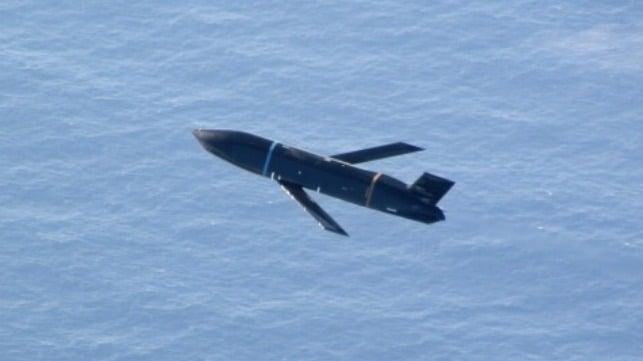Study: U.S. Will Run Out of Anti-Ship Missiles in a Fight With China

America's military possesses sophisticated precision weapons, but it doesn't have enough of them for a major naval conflict with China, according to a new study by Washington think tank CSIS.
The war in Ukraine has woken up the U.S. defense establishment to the burn rate for munitions in modern industrial warfare. Decades of war in the Middle East have honed America's capabilities for countering terrorist groups, but near-peer conflict is another matter. At peak intensity last summer, Russian forces were shelling Ukraine's front lines at a rate of 40,000 artillery rounds a day, while launching salvos of dozens of guided cruise missiles into rear areas. That rate has slowed in recent months, indicating to some analysts that even Russia - the inheritor of bottomless Soviet stockpiles - has managed to use up enough ammunition that it has to conserve.
Meanwhile, the U.S. and its NATO allies have found themselves working hard to transfer enough munitions to Ukraine to even the odds. The U.S. Army, realizing that its ammunition production rate is too low for sustained warfare, plans to increase artillery shell output at its arsenals by 500 percent by 2025.
According to CSIS, U.S. naval forces may have to make similar supply chain investments in order to deter, fight and win. After examining U.S. defense stockpile data and running two dozen wargame simulations, CSIS' experts concluded that the most important American missile stocks would be gone in a week of combat in a Taiwan Strait invasion scenario.
CSIS' simulated U.S. munitions expenditure for a three-week war with China averaged about 4,000 Joint Air-to-Surface Standoff Missiles (JASSMs), 450 Long Range Anti-Ship Missiles (LRASMs), 400 Harpoon anti-ship missiles, 400 land-attack Tomahawk cruise missiles, and large numbers of the SM-6 multirole missiles carried by Navy destroyers. Since China's anti-access/area-denial capabilities are powerful within the First Island Chain, long-range munitions were essential in the opening phase of every simulation. Without the capability to get close to the Chinese fleet or to resupply ground forces on Taiwan, U.S. forces leaned heavily on bomber-launched cruise missiles to strike from outside of China's air defense envelope. In every simulation, the U.S. burned through the entire LRASM missile inventory in less than a week, and on average, all JASSMs were gone by Day 9.
Replacements would not be available on any meaningful timeline. Some of these precision weapons take two years to build from the signing of an order to first delivery, according to CSIS - far too long to be relevant in an emergency. Augmenting production capacity takes years as well, and the ongoing workforce shortage issues in defense manufacturing make boosting output even harder. In addition, missile production is vulnerable to the disruption of Chinese-dominated component supplies, like rare-earth metals and battery components.
"The reality is that the timelines for a conflict—and consequently for credible deterrence—are shrinking in an increasingly competitive international security environment. The defense industrial base—including the munitions industrial base—is struggling to replenish some of its stockpiles and is unable to meet wartime needs," cautioned CSIS. "'Just in time' and lean manufacturing operations must be balanced with carrying added capacity to enable a surge in case of a war."
To improve America's ability to deter and fight, CSIS called for a deep reassessment of U.S. munition requirements for high-intensity combat in order to determine the needed stockpile size. It also recommends creating a strategic reserve of missile components - metals, rocket propellants, explosives and electronic systems - to reduce production timelines and ensure the supply chain in the event of an emergency. In addition, it calls for better contracting practices to keep down cost and guarantee long-term revenue for defense contractors, like the multi-year buys that the U.S. Navy uses to purchase series of ships. Co-production arrangements with allied nations like Australia, Norway and Japan could also increase resilience and economies of scale.
"The good news is that there appears to be a great awakening in some areas of the Pentagon and Congress about challenges with the U.S. defense industrial base and the lack of preparedness for the wartime environment that now exists," concluded CSIS. "But there is still more talk than action at lower levels of the DoD and the military services."
